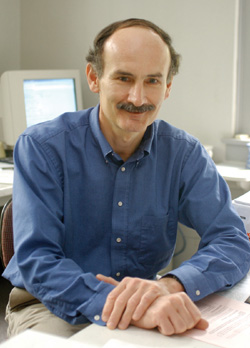
Wayne Ray, Ph.D. led the research at VUMC.
Vanderbilt jumps in NIH funding
Vanderbilt University Medical Center continues to climb the ranks of academic medical centers when it comes to funding from the National Institutes of Health. Vanderbilt ranked 18th out of 125 medical schools based on funds received during fiscal year 2002 (Oct. 1, 2001-Sep. 30, 2002).
VUMC moved up one position from its 2001 standing. Total NIH funding increased nearly 30 percent to $175.2 million compared to fiscal year 2001, and the total number of awards rose from 403 to 458.
“I am delighted that our ranking is increasing,” said Lee E. Limbird, Ph.D., associate vice chancellor for Research. “This is a manifestation of the quality and impact of the research of our faculty and their colleagues, which increases their competitiveness in obtaining peer-reviewed funding.
“I am equally pleased that I still perceive the same joy and excitement in the research process among our faculty, which will not only foster their discoveries but also assure their sustained or even increased funding.”
Since 1998, NIH funding to VUMC has risen an average 17 percent a year, making Vanderbilt the second fastest growing academic medical center in the nation. VUMC is $13.6 million ahead of the No. 19 school in total NIH funding and only $1.7 million behind the No. 17 ranked school.
Several departments were in the top 10 this year relative to their peer departments across the country. Pharmacology and Molecular Physiology & Biophysics were both No. 2, Cell & Developmental Biology was No. 8, and Medicine was No. 9.
Alan D. Cherrington, Ph.D., Charles H. Best Professor of Diabetes Research and chair of Molecular Physiology & Biophysics, echoed Limbird’s praise for the quality of Vanderbilt’s faculty members and their research programs. “These rankings are also a reflection of the fact that we have very focused research areas that touch many of the health care issues of the day, for example diabetes, cancer, and neurological disorders — diseases for which research funds are available” he said.
Heidi E. Hamm, Ph.D., Earl W. Sutherland Jr. Professor and Chair of Pharmacology, also attributed her department’s standing to the excellence of its faculty, including recently recruited members. The department is the midst of doubling its size, she said.
“The quality of the current faculty and the superb training environment in the department, as well as the generous development funds provided by the medical center’s leadership, have made it possible to recruit a number of outstanding people, including Alex Brown, Chang Chung, Jeff Conn, Seva Gurevich, and Pat Levitt,” Hamm said.
“All of these new faculty have brought dynamic research programs with them, and are successful at obtaining NIH funding,” she said. “We will see their impact on Vanderbilt’s research environment even more going forward.”
Award data and rankings are available on the Web site http://grants2.nih.gov/grants/award/trends/medschc.htm.













